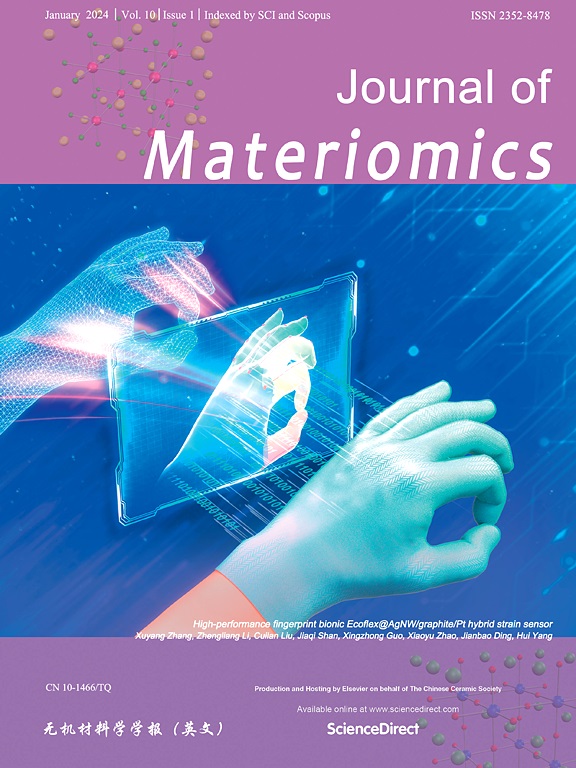通过相场模拟提高反铁电畴调制的储能性能
IF 8.4
1区 材料科学
Q1 CHEMISTRY, PHYSICAL
引用次数: 0
摘要
本文章由计算机程序翻译,如有差异,请以英文原文为准。

Antiferroelectric domain modulation enhancing energy storage performance by phase-field simulations
Antiferroelectric materials represented by PbZrO3(PZO) have excellent energy storage performance and are expected to be candidates for dielectric capacitors. It remains a challenge to further enhance the effective energy storage density and efficiency of PZO-based antiferroelectric films through domain engineering. In this work, the effects of three variables, misfit strain between the thin film and substrate, defect dipoles doping, and film thickness, on the domain structure and energy storage performance of PZO-based antiferroelectric materials are comprehensively investigated via phase-field simulations. The results show that applying tensile strain to the films can effectively increase the transition electric field from antiferroelectric to ferroelectric. In addition, the introduction of defect dipoles while applying tensile strain can significantly reduce the hysteresis and improve energy storage efficiency. Ultimately, a recoverable energy density of 38.3 J/cm3 and an energy storage efficiency of about 89.4% can be realized at 1.5% tensile strain and 2% defect dipole concentration. Our work provides a new idea for the preparation of antiferroelectric thin films with high energy storage density and efficiency by domain engineering modulation.
求助全文
通过发布文献求助,成功后即可免费获取论文全文。
去求助
来源期刊

Journal of Materiomics
Materials Science-Metals and Alloys
CiteScore
14.30
自引率
6.40%
发文量
331
审稿时长
37 days
期刊介绍:
The Journal of Materiomics is a peer-reviewed open-access journal that aims to serve as a forum for the continuous dissemination of research within the field of materials science. It particularly emphasizes systematic studies on the relationships between composition, processing, structure, property, and performance of advanced materials. The journal is supported by the Chinese Ceramic Society and is indexed in SCIE and Scopus. It is commonly referred to as J Materiomics.
 求助内容:
求助内容: 应助结果提醒方式:
应助结果提醒方式:


